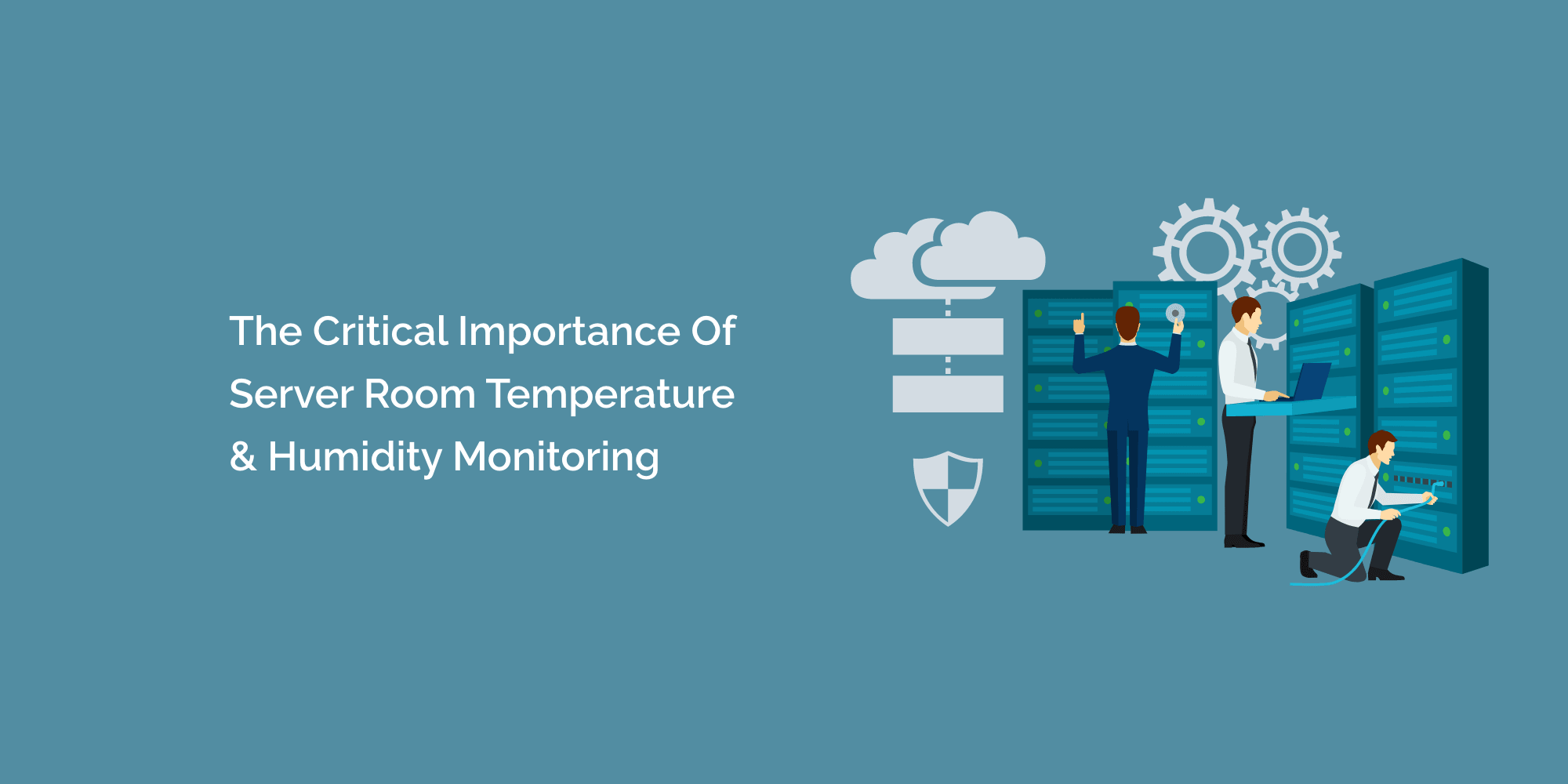In today's digital age, server rooms are vital in housing the infrastructure that supports businesses, organizations, and online services. The reliable operation of servers is essential for data storage, processing, and ensuring uninterrupted access to critical information. Among the various factors that can impact server performance, temperature, and humidity levels are of utmost importance. This blog will delve into the vital importance of server room temperature and humidity monitoring. We will explore the potential risks associated with improper environmental conditions and highlight the benefits of implementing a robust monitoring system.
The Impact of Temperature on Server Performance
-
Heat as a Threat: Excessive heat in server rooms can lead to various issues, including increased power consumption, reduced hardware lifespan, and system failures. Elevated temperatures cause components to operate at higher temperatures, accelerating wear and tear and potentially causing irreversible damage.
-
Cooling Challenges: Efficient cooling mechanisms are crucial to maintain optimal temperatures in server rooms. Monitoring temperature variations helps identify hotspots, allowing for targeted cooling solutions to prevent equipment damage and ensure consistent performance.
- Energy Efficiency: Proper temperature monitoring enables the optimization of cooling systems, helping to reduce energy consumption. By maintaining appropriate temperatures, businesses can achieve energy efficiency goals and reduce operational costs associated with excessive cooling.
The Role of Humidity in Server Room Performance
-
Humidity Control: Excessive humidity levels in server rooms can lead to condensation, which poses risks to equipment, including corrosion, short circuits, and electrical failures. On the other hand, low humidity levels can cause electrostatic discharge, leading to equipment damage.
-
Equipment Reliability: Humidity monitoring helps ensure that server room humidity remains within acceptable ranges, protecting equipment and maintaining its reliability. Businesses can mitigate the risks of moisture-related failures and minimize downtime by controlling humidity.
- Environmental Monitoring: Integrating humidity sensors into monitoring systems allows companies to gain a comprehensive understanding of ecological conditions. This data can identify trends, detect abnormalities, and make informed decisions regarding cooling and humidity control strategies.
Mitigating Risks and Ensuring Business Continuity
-
Proactive Alert Systems: Implementing a server room monitoring system with temperature and humidity sensors enables proactive monitoring and alerting. Real-time alerts notify operators of deviations from optimal conditions, allowing immediate action to prevent equipment damage and avoid costly downtime.
-
Remote Monitoring Capabilities: Remote monitoring systems provide the flexibility to access real-time temperature and humidity data from anywhere, enabling timely responses to environmental changes. This feature is precious for businesses with multiple server rooms or off-site monitoring requirements.
- Compliance and Audit Requirements: Many industries have specific compliance and audit requirements regarding server room environmental conditions. Temperature and humidity monitoring systems help businesses meet these requirements, ensuring they adhere to industry standards and regulations.
Scalability and Future-Proofing
-
Scalability: Server room temperature and humidity monitoring systems are designed to be scalable, accommodating the growing needs of businesses. As server infrastructures expand or additional server rooms are established, monitoring systems can be easily extended to ensure consistent coverage and monitoring capabilities.
-
Integration with IT Infrastructure: Advanced monitoring systems can integrate with existing IT infrastructure, such as network management tools or server monitoring software. This integration provides a holistic view of the entire IT environment, allowing for comprehensive monitoring and centralized management.
- Predictive Analytics and Trend Analysis: With advanced analytics capabilities, monitoring systems can analyze historical data to identify patterns, predict potential issues, and optimize environmental control strategies. This data-driven approach enhances decision-making and helps businesses stay ahead of potential risks.
Certainly! Here are some frequently asked questions (FAQs) related to server room temperature and humidity monitoring:
Why are temperature and humidity monitoring necessary in server rooms?
Temperature and humidity monitoring is crucial in server rooms to ensure optimal server performance and reliability conditions. Proper environmental control helps prevent equipment overheating, reduces the risk of hardware failures, and minimizes downtime.
What are the potential risks of improper temperature and humidity levels in server rooms?
Improper temperature and humidity levels can lead to various risks, including equipment damage, reduced hardware lifespan, system failures, and increased energy consumption. Excessive heat can cause components to operate outside their optimal temperature range, while high humidity levels can result in condensation and moisture-related damage.
How does temperature impact server performance?
Elevated temperatures can lead to reduced server performance and increased power consumption. Overheating can accelerate component wear and tear, shorten hardware lifespan, and increase the likelihood of system failures. Proper temperature monitoring helps identify and address heat-related issues promptly.
Conclusion
Room temperature and humidity monitoring are critical to maintaining optimal server performance and ensuring business continuity. By monitoring and controlling environmental conditions, businesses can prevent equipment failures, reduce downtime, and optimize energy efficiency. Implementing a robust monitoring system equipped with temperature and humidity sensors, proactive alert systems, and remote monitoring capabilities allows businesses to stay one step ahead of potential risks. With scalability, integration with IT infrastructure, and the ability to leverage advanced analytics, companies can future-proof their monitoring solutions and adapt to evolving needs. Investing in server room temperature and humidity monitoring is a proactive step toward safeguarding critical infrastructure, protecting valuable data, and maintaining seamless operations in today's technology-driven world.








